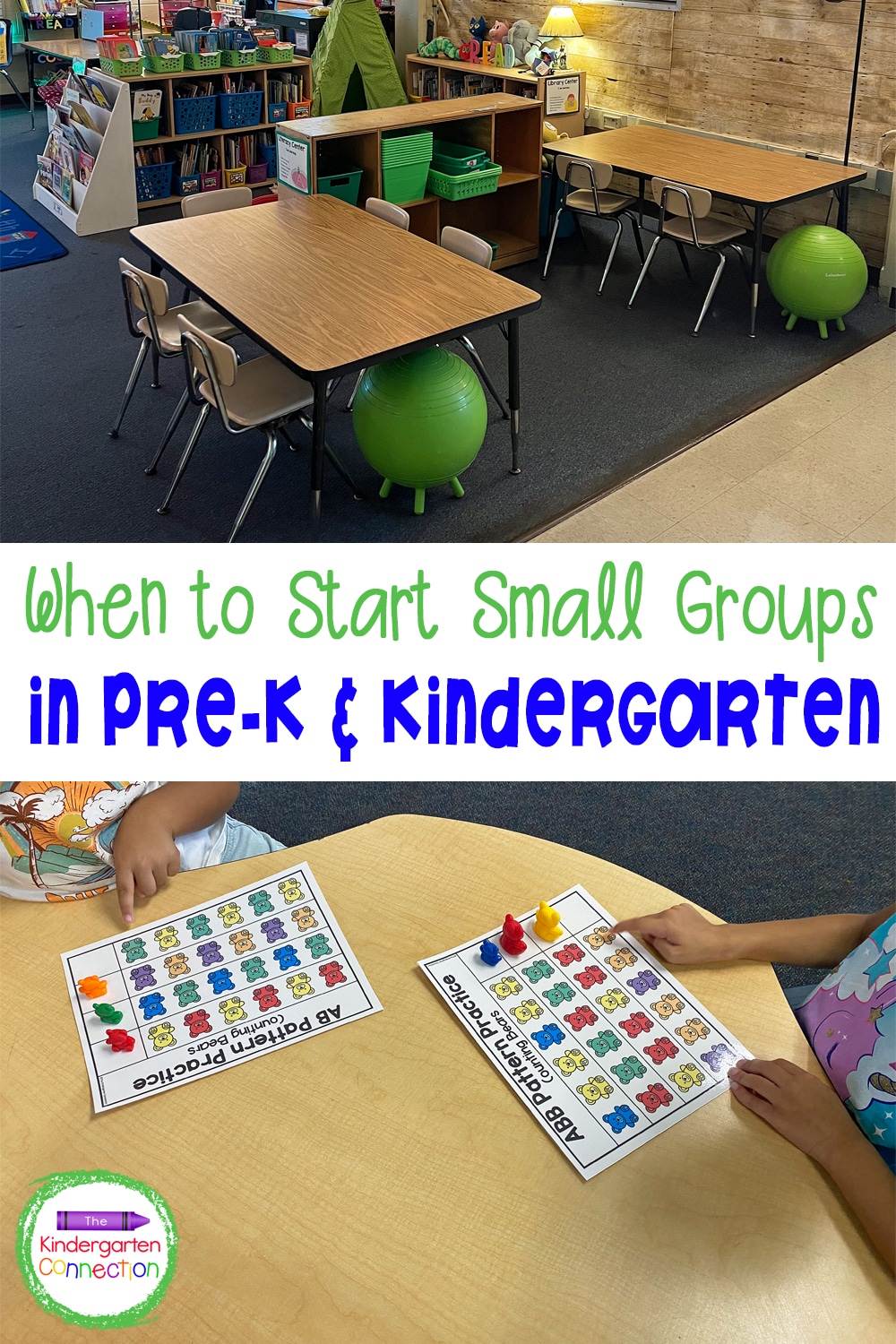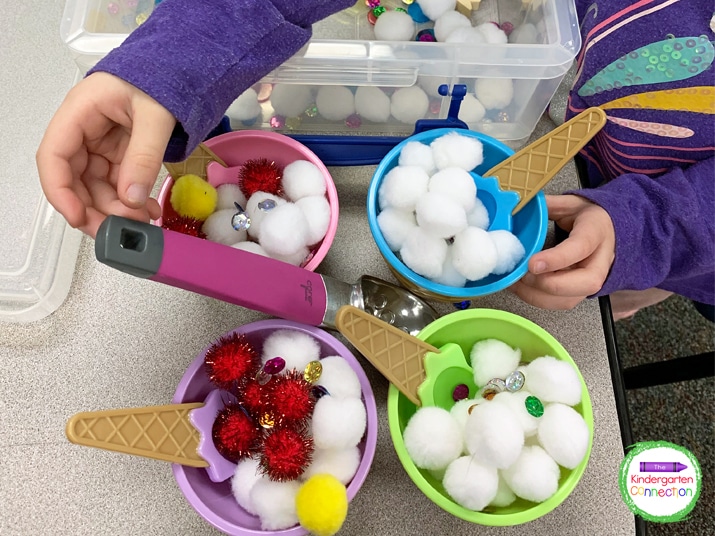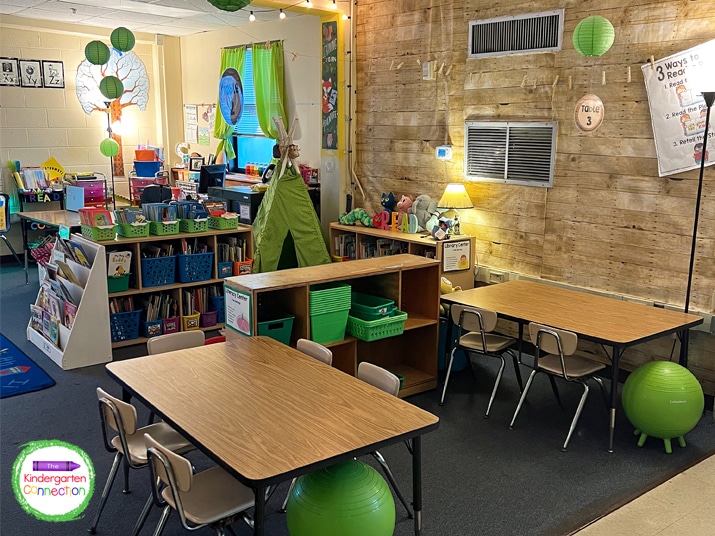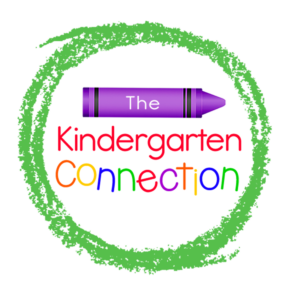You spent all summer making sure that your classroom environment was set up exactly how you wanted it. Your math and literacy centers are engaging, your circle time is going amazing and you’ve spent so much time learning how to make your classroom playful! Now, you’re ready to jump into teaching in small groups – but is it too soon? Knowing when to start small groups in Pre-K and Kindergarten can be difficult, but keep reading to see exactly the right time, so that your students can get the most out of them!
*For engaging, hands-on activities for your small groups, be sure to grab our Pre-K and Kindergarten Centers by Skill BUNDLE!

As teachers, we all know how beneficial small groups are. They bridge learning gaps, ensure that everyone can be heard, and they improve relationships between students and their teachers. Small groups are a staple in our classrooms. They are super powerful! But… if you start them too soon, you may not get to experience them in the best way. And knowing when to start small groups, can leave us with more questions than answers.
Check out the first steps I take to get small groups going in my classroom and why!
At the beginning of the year, we are all working with a brand new group of kids, teaching them all of the procedures and routines of our classroom. Routines are so important! They are literally the “make or break” of a successful school year.
And oh my gosh, I know that it can be exhausting spending lots of time frontloading at the beginning of the year – but if you want to have smooth small groups with limited interruptions, your other routines must be super solid first. You want to lay a strong foundation of expectations early on so that you don’t have to continually repeat them throughout the year.

At the beginning of the school year, we are just getting to know our little learners. It’s so hard to give a definitive number of weeks to wait because each class is different, but on average, I wait about 3 weeks before I begin small groups, and even longer if I have a bunch that needs additional reinforcement.
So, I know the next important question is, “What am I supposed to do before small groups begin?”

During the first few weeks, I am playing with students, while they are in centers – modeling behaviors and routines. I am spending time with them in centers, on the carpet, and using that time to teach them how to correctly use the materials in centers and in our classroom.
This gives me time to make observations, which will guide my small groups. I can see which students work well together and which students are stronger in certain areas… I learn SO much during this observation time. Honestly, you can learn just as much about students this way, than if you are doing traditional assessments.

We know small groups are important. They help meet learning gaps that our students may have and help them to succeed. But, what’s even more important is making sure that we start them at the right time – so that we can maximize their effectiveness!
(even if you “aren’t allowed to play”)
If you’re wanting to incorporate playful learning, free-flowing centers, effective routines, and more in your Pre-K or Kindergarten classroom, then you’ll definitely want to join us in P.L.A.Y. (Playful Learning All Year)!
This course is a deep dive into practical ways that you can create a playful learning environment in your classroom. Be sure to request an invitation so you’re the first to hear when the virtual doors open!
